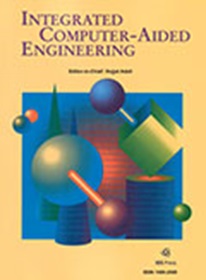基于卷积神经网络的建筑结构实测数据相关应变估计技术
IF 5.3
2区 计算机科学
Q1 COMPUTER SCIENCE, ARTIFICIAL INTELLIGENCE
引用次数: 0
摘要
提出了一种基于机器学习的建筑物结构构件应变估计方法,利用卷积神经网络(CNN)确定结构构件应变响应之间的关系。为了准确估计应变,引入相关分析,在多个结构构件的响应中选择最优的CNN模型。利用与目标构件响应高度相关的构件响应训练出的最优CNN模型来估计目标构件的应变,在用于构建最优CNN的传感器存在缺陷的情况下,本文提出的基于相关性的技术还可以提供次优CNN模型。通过对三维钢结构的数值研究和钢架试件的试验研究,验证了该方法的有效性。本文章由计算机程序翻译,如有差异,请以英文原文为准。
A measured data correlation-based strain estimation technique for building structures using convolutional neural network
A machine learning-based strain estimation method for structural members in a building is presented The relationship between the strain responses of structural members is determined using a convolutional neural network (CNN) For accurate strain estimation, correlation analysis is introduced to select the optimal CNN model among responses from multiple structural members. The optimal CNN model trained using the response of the structural member with a high degree of correlation with the response of the target structural member is utilized to estimate the strain of the target structural member The proposed correlation-based technique can also provide the next best CNN model in case of defects in the sensors used to construct the optimal CNN. Validity is examined through the application of the presented technique to a numerical study on a three-dimensional steel structure and an experimental study on a steel frame specimen.
求助全文
通过发布文献求助,成功后即可免费获取论文全文。
去求助
来源期刊

Integrated Computer-Aided Engineering
工程技术-工程:综合
CiteScore
9.90
自引率
21.50%
发文量
21
审稿时长
>12 weeks
期刊介绍:
Integrated Computer-Aided Engineering (ICAE) was founded in 1993. "Based on the premise that interdisciplinary thinking and synergistic collaboration of disciplines can solve complex problems, open new frontiers, and lead to true innovations and breakthroughs, the cornerstone of industrial competitiveness and advancement of the society" as noted in the inaugural issue of the journal.
The focus of ICAE is the integration of leading edge and emerging computer and information technologies for innovative solution of engineering problems. The journal fosters interdisciplinary research and presents a unique forum for innovative computer-aided engineering. It also publishes novel industrial applications of CAE, thus helping to bring new computational paradigms from research labs and classrooms to reality. Areas covered by the journal include (but are not limited to) artificial intelligence, advanced signal processing, biologically inspired computing, cognitive modeling, concurrent engineering, database management, distributed computing, evolutionary computing, fuzzy logic, genetic algorithms, geometric modeling, intelligent and adaptive systems, internet-based technologies, knowledge discovery and engineering, machine learning, mechatronics, mobile computing, multimedia technologies, networking, neural network computing, object-oriented systems, optimization and search, parallel processing, robotics virtual reality, and visualization techniques.
 求助内容:
求助内容: 应助结果提醒方式:
应助结果提醒方式:


